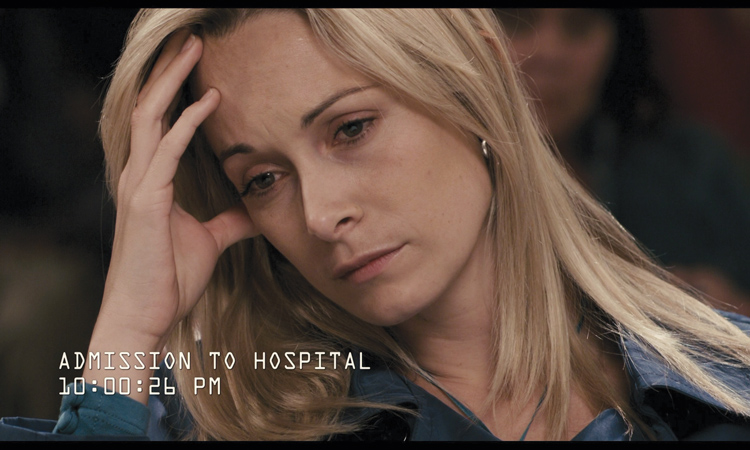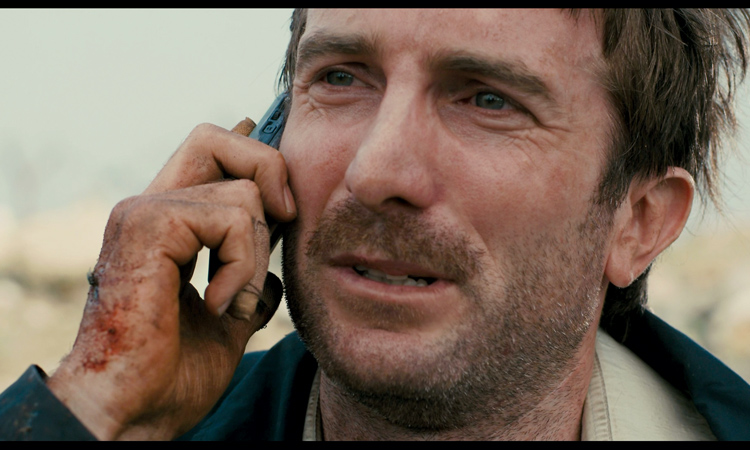“It was kind of miraculous that I ended up being in the film at all,” chuckles Sharlto Copley, thinking back to the creation of 2009’s scrappy, surprise sci-fi hit District 9. Whenever talk turns to how director Neill Blomkamp brought this politically charged tale of alien and human strife in Johannesburg to life – and how Copley found himself as its unlikely star – it’s hard for him to hide a sense of utter disbelief that the whole thing actually happened. In retrospect, we can hardly blame him. An unknown actor headlining a ground-breaking new movie packed with high-end visual effects, with mega-director Peter Jackson producing? It’s far from an easy sell. “I have a whole different sense of how crazy it was,” he says in retrospect. “The way the stars aligned is just astounding.”
He’s not wrong. Ten years ago, nobody knew Copley, who was then a producer with dreams of creating his own TV channel. Likewise no one had heard of Blomkamp either, himself a visual effects whizz with hopes of helming his own feature film. When the opportunity finally arose to make their dreams a reality, the pair’s shared experiences growing up in a country stricken with apartheid led them – and writer Terri Tatchell – to create a new installment to both the found-footage and science fiction genres. The result was District 9, a film that transported us to an alternate timeline where aliens landed in Johannesburg in 1982 and quickly became second class citizens. Cut to present day, and with tensions at an high, company man Wikus (Copley) is sent into the alien encampment to relocate South Africa’s new neighbours – however as with most sci-fi endeavors, things don’t quite go according to plan.
“The early part of our relationship happened at the point where cheaper technologies were becoming available,” says Copley on his long-standing friendship with Blomkamp. “We were all trying to make our stuff look as cool as possible with as little money as possible. I distinctly remember Neill saying: ‘Everyone is able to make their stuff look really slick – and I want to do something different.’”

Shortly after they met, Blomkamp emigrated from South Africa to Vancouver and identified a story inspiration that was oddly close to home. “Neill wanted to shoot in the townships because people were so removed from the world that we grew up with,” Copley tells us. “He came up with this idea of shooting very raw footage that looked like shitty corporate video and putting in high-end CGI. The first thing he ever did was use high-end robots – which became the seed of Chappie,” he reveals, detailing early inspirations for Blomkamp’s third feature. “Soon after, he came up with the idea of aliens living in the townships.”
What followed was Alive In Joburg, a short that showed exactly what Blomkamp’s cheap and cheerful CGI could do. The film’s success landed Blomkamp on the radar of Peter Jackson, who lined him up to helm the long-in-gestation movie adaptation of the videogame Halo. When things ultimately fell apart, the duo’s little aliens-in-the-slums idea suddenly took precedence.
“It was never a proper script, it was always in a treatment format,” says Copley, remembering the District 9’s loose development process. “As soon as I saw Neill’s idea – that Wikus was going to turn into one of these creatures – I thought we had structural gold from a story point of view. It was a very solid concept. You’re going to turn into the thing you’re oppressing? Coming from South Africa, that resonated very deeply at a creative and artistic level.”
With the core of their story set, Copley signed on as the film’s producer, ready to guide Blomkamp’s vision to the screen. However when the time came to capture some rough footage to provide a flavour of the film’s free-flowing tone, everything changed.
“I started to be Wikus and the character came to life,” smiles Copley, recalling his experiences standing in as the lead for Blomkamp’s sizzle-reel. “We’d done Alive In Joburg so I was familiar with the world Neill was building. I basically just bullshitted about the world, the aliens and everything I knew – and the things I didn’t know, I just made up,” he laughs. “We did an improv session with local residents in Soweto. I said ‘pretend I’m from the government and I’m evicting you’. That went a lot better than Neill or I were planning and by the time we got to the end, we knew something magical had happened – but there was still no thought that I was going to play Wikus.”
After digesting the footage, Blomkamp was convinced of two things: he was definitely on to something with the film’s improvisational feel – and if he wanted to keep it, he needed to use Copley’s light-hearted talents. “There was 60 million bucks on the line and Neill says he wants to use his buddy? You can imagine that conversation,” laughs Copley on what happened next. “They were like ‘isn’t Sharlto producing the movie? Has he done anything else?’ then ‘wait, he’s not an actor AND he’s going to make up all his lines?’ You just couldn’t do that deal in Hollywood now. The only reason we were able to was because Peter Jackson had absolute control in his deal. Pete just said yes – use Sharlto,” explains the actor. “It wasn’t intimidating at all, which is weird as I think about it now. It just flowed naturally.”

Of course, once he had secured the role, Copley made time for some on-the-job homework to ensure Wikus’ transformation from human to alien was as authentic as possible. “All Peter Jackson and Fran Walsh had seen me do at that point was Wikus in the first act of the movie: the fun, bumbling Wikus. He then has to go through this huge drama and be in agonising pain and I didn’t even know if I could do that. I had never cried on camera – ever,” he laughs. “I was very technical about us not shooting in sequence so I built a graph and put numerical values on things like how sick Wikus was and how angry he was. I basically plotted the intensity of various emotions because he gets sick but as he becomes more alien, he starts to get stronger. I found that extremely helpful. It was the confidence Neill had in me too, which honestly I’m so grateful for, because he saw something in me that even I hadn’t seen.”
Blomkamp and Copley set up production in Cape Town’s authentic Townships, further blurring the line between real and fake. It was a task that came with plenty of visual benefits – alongside a few challenging and not exactly hygienic negatives. “We chose to shoot in the real environments and it really made a difference,” reasons Copley. “We were shooting in Cape Town and managed to get some government housing for the people in the shacks, which was a cool thing that we were able to do for the local community. We were able to buy people’s shacks and use the real things that they had been living in.”
However when the cameras started rolling, Copley wasn’t afraid to get his hands dirty. “I remember the scene where Wikus goes underground into a hole,” he says, recalling a sequence where the military are closing in. “We dug it in a shack and because we were on a landfill, there were layers of actual trash when I climbed into it,” he grins. “It was so old that it had petrified, so it didn’t stink – but I was basically inside a landfill of trash.”
As production progressed, Copley became increasingly encased in prosthetics as his slow metamorphosis from human to alien got underway. “On the days where I had to wear the alien claw, we’d leave it on all day. It’d take about two and a half hours and I couldn’t get it off,” he explains. “Eating was always hard because I was in a real trash heap and there were days where I had human faeces and dog shit on the tentacle from crawling around on the floor,” he adds with a grimace. “It turns out there are a lot of times where Wikus is on the floor!”
Then there were the film’s cutting-edge action sequences, created with Blomkamp’s keen eye for thrilling DIY visual effects and transforming his one-time producer into an unlikely gung-ho hero. “I loved it. It was one of those things where you get to live your dreams,” says Copley. “I’d wanted to be an actor from the age of about ten so it was incredible getting to do these action scenes in a proper movie with Peter Jackson producing. It was just surreal.”

That surreal feeling intensified when District 9 hit audiences following a hugely intriguing (and successful) viral marketing campaign. Through their gripping visuals, prawn-like aliens and faux-documentary storytelling, Blomkamp, Copley and Tatchell had created a startling and attention-grabbing debut that was both intensely personal and universally familiar. The film went on to earn an Academy Award nomination for Best Picture at 2009’s Oscars – a feat that’s almost unheard of within the sci-fi genre – and it made two young creatives from South Africa, Copley and Blomkamp, household names.
“It was the biggest single incident in my life,” says Copley candidly. “To have the opportunity to make something that could be so personal and have the impact it had which then changes everything in my life going forward? You can’t quantity it. I feel a deep sense of gratitude for Neil and that connection. He came into my life and created that opportunity for me. It’s enormously humbling,” he says. “Let me put it this way – after the movie I thought: ‘I can
die satisfied!’”
District 9 debuts on 4K Ultra HD on October 19 from Sony Home Pictures Entertainment.
